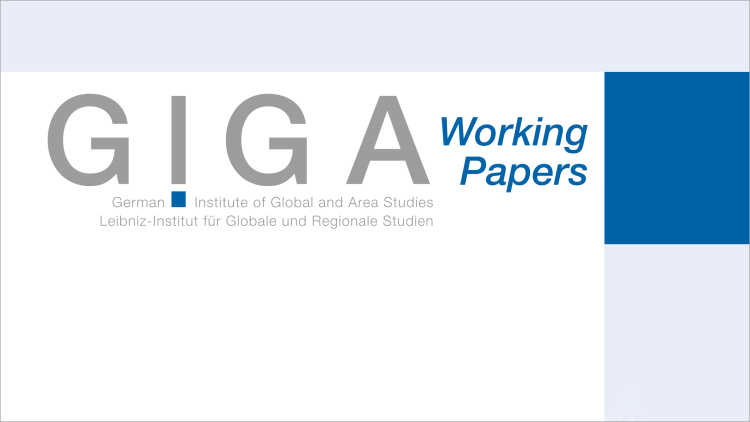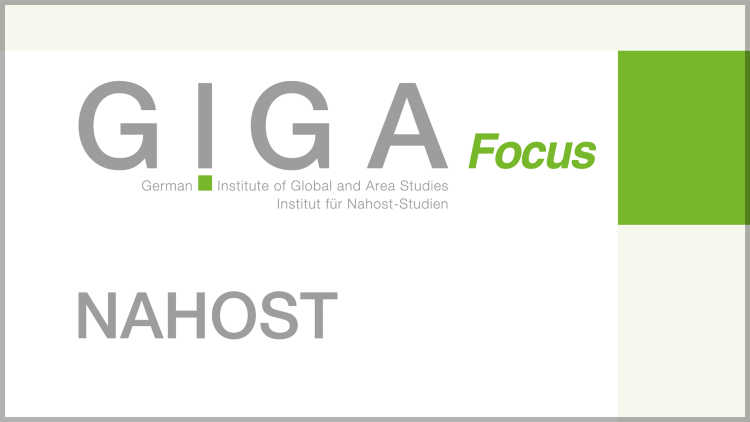- Home
- Publications
- GIGA Focus
- Problemzone? Chancenmarkt! – Der Nahe Osten und die deutsche Wirtschaft
GIGA Focus Middle East
Problemzone? Chancenmarkt! – Der Nahe Osten und die deutsche Wirtschaft
Number 9 | 2010 | ISSN: 1862-3611
Das Statistische Bundesamt verkündete am 13. August 2010, dass die deutsche Wirtschaft im zweiten Quartal 2010 mit 2,2 Prozent so schnell gewachsen sei wie seit 20 Jahren nicht mehr. Seit der Veröffentlichung der Wachstumsprognosen der Europäischen Kommission von 3,4 Prozent am 13. September 2010 steht Deutschland nun auch in der europäischen Statistik offiziell ganz vorn.
Analyse Obwohl sich die wichtigsten Handelspartner Deutschlands innerhalb der EU und der Organisation für wirtschaftliche Kooperation und Entwicklung (OECD) noch nicht von den Folgen der internationalen Wirtschafts- und Finanzkrise erholt haben, verzeichnen deutsche Unternehmen gegenwärtig eine deutliche Zunahme von Aufträgen aus dem Ausland. Ein wichtiger Grund für diese positive Entwicklung ist der Anstieg von deutschen Exporten in die Schwellen- und Entwicklungsregionen. Vor diesem Hintergrund lohnen sich nachhaltige Investitionen in und Handelsbeziehungen mit der EU-Nachbarregion Nahost mehr denn je.
Der Nahe Osten wird häufig nur als Krisenregion und Energielieferant wahrgenommen. Dabei ist die Region schon heute, nach den USA, das zweitwichtigste Ziel für deutsche Nicht-EU-Exporte.
Der Nahe Osten hat sich schneller von der Wirtschafts- und Finanzkrise erholt als andere Regionen. Das Importniveau liegt bereits heute über dem Niveau vor Ausbruch der Krise vom Sommer 2008 – Tendenz steigend.
"Made in Germany" ist ein Gütesiegel im Nahen Osten. Insbesondere deutsche Investitionsund Vorleistungsgüter genießen einen ausgezeichneten Ruf – nicht zuletzt aufgrund eines guten Preis-Leistungsverhältnisses.
Sowohl die Bundesrepublik als auch die EU fördern Forschung, Innovation und Kooperation mit einem Volumen von über 50 Milliarden Euro, woran sich auch kleine und mittlere Unternehmen aus der EU und aus EU-Nachbarregionen beteiligen können. Eine wenig bekannte Initiative innerhalb dieser Förderung ist das Mediterranean Innovation & Research Area (MIRA) Programm, das unter anderem einen Euro-Mediterranen Innovationsraum aufbauen soll.
Footnotes
Regional Institutes
Research Programmes
How to cite this article
Brach, Juliane (2010), Problemzone? Chancenmarkt! – Der Nahe Osten und die deutsche Wirtschaft, GIGA Focus Middle East, 9, Hamburg: German Institute for Global and Area Studies (GIGA), http://nbn-resolving.de/urn:nbn:de:0168-ssoar-274354
Imprint
The GIGA Focus is an Open Access publication and can be read on the Internet and downloaded free of charge at www.giga-hamburg.de/en/publications/giga-focus. According to the conditions of the Creative-Commons license Attribution-No Derivative Works 3.0, this publication may be freely duplicated, circulated, and made accessible to the public. The particular conditions include the correct indication of the initial publication as GIGA Focus and no changes in or abbreviation of texts.
The German Institute for Global and Area Studies (GIGA) – Leibniz-Institut f�ür Globale und Regionale Studien in Hamburg publishes the Focus series on Africa, Asia, Latin America, the Middle East and global issues. The GIGA Focus is edited and published by the GIGA. The views and opinions expressed are solely those of the authors and do not necessarily reflect those of the institute. Authors alone are responsible for the content of their articles. GIGA and the authors cannot be held liable for any errors and omissions, or for any consequences arising from the use of the information provided.




